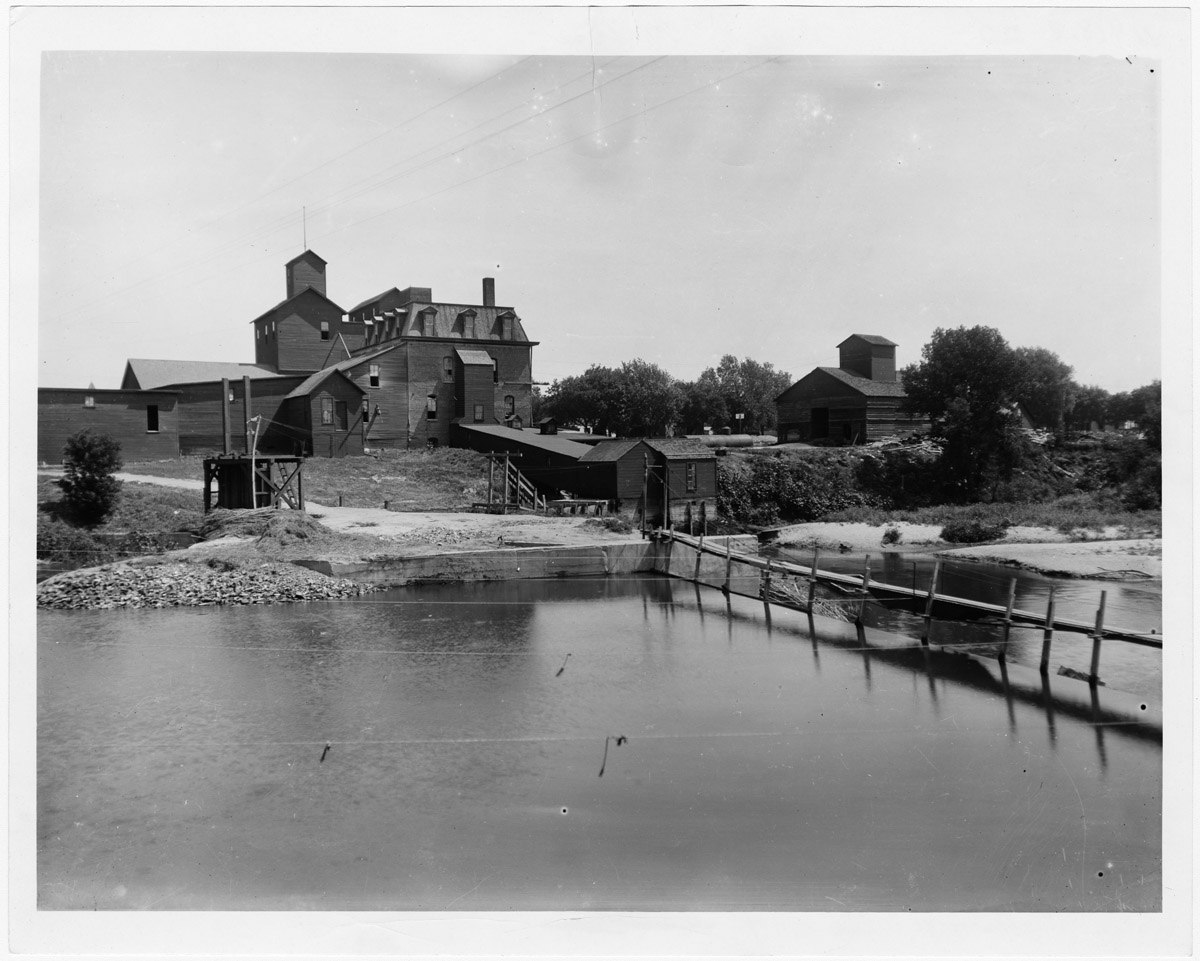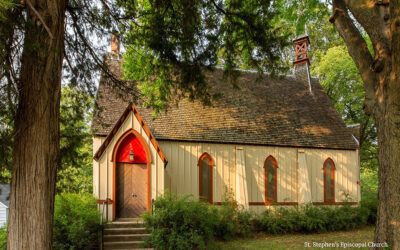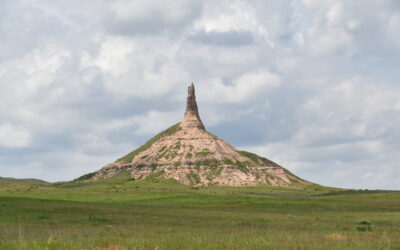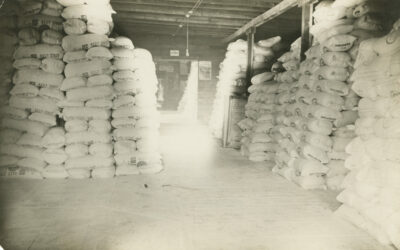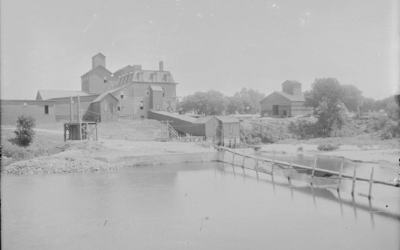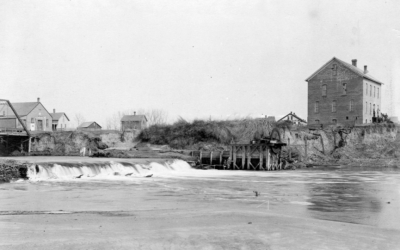Neligh Mill state historic site
History of the Neligh Mill
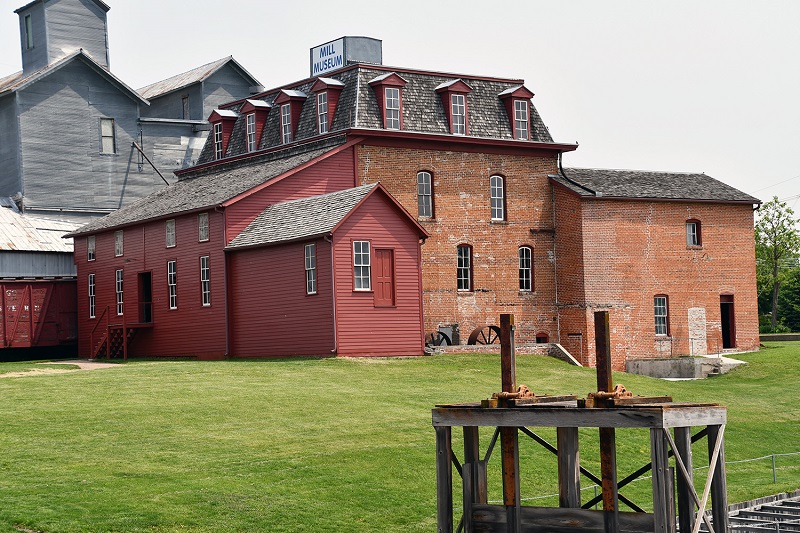
History of the Neligh Mill
Widespread settlement across Nebraska led to an increased need for flour mills that would grind grain into flour. Among the many mills that sprang up across the state was Neligh Mill, one of the state’s major mills and which operated for over seventy-five years.
The Early Years
Construction of the brick mill building was started in 1873 by the town’s founder, John D. Neligh. The mill was completed by W.C. Gallaway, an early Neligh businessman who then assumed ownership. Gallaway improved the brush dam on the Elkhorn River, rebuilt the flume, and installed a horizontal water turbine to power the drive works in the mill’s basement. Two runs of stone burrs were put in, and the mill opened on August 29, 1874. Later, in 1878, two more burrs were added, increasing production.
S.F. Gilman Ownership
The 1880’s brought the modern steel roller process to Nebraska, and in 1886 the Neligh MIll converted to the new system. The stone burrs were removed and replaced by seven stands of new Allis rollers, which improved the quality of the mill’s flour and increased its capacity to 140 barrels of flour a day.
The mill received both commercial orders and government contracts. Neligh flour was shipped to the Indian reservations in South Dakota and to military posts, including Fort Robinson. During these years, the mill also exported sizable quantities of flour to England.
To keep up with the growing number of orders, the mill was operated twenty-four hours a day as often as possible. However, how often the mill could run was determined by the condition of the river — too much or too little water for the mill to use limited production.
The 1915 to 1969 period
World War I kept the mill bustling, although strict government milling regulations put a limit on sales. With the restriction on flour purchasing and use, substitutes such as corn meal had to be manufactured, and the mill received orders from other mills that lacked the equipment for that production. The final effort to continue the use of water power necessitated the construction of a new flume and penstock in 1919. However, the great flood of 1920 broke the dam and forced the abandonment of water power in favor of electricity.
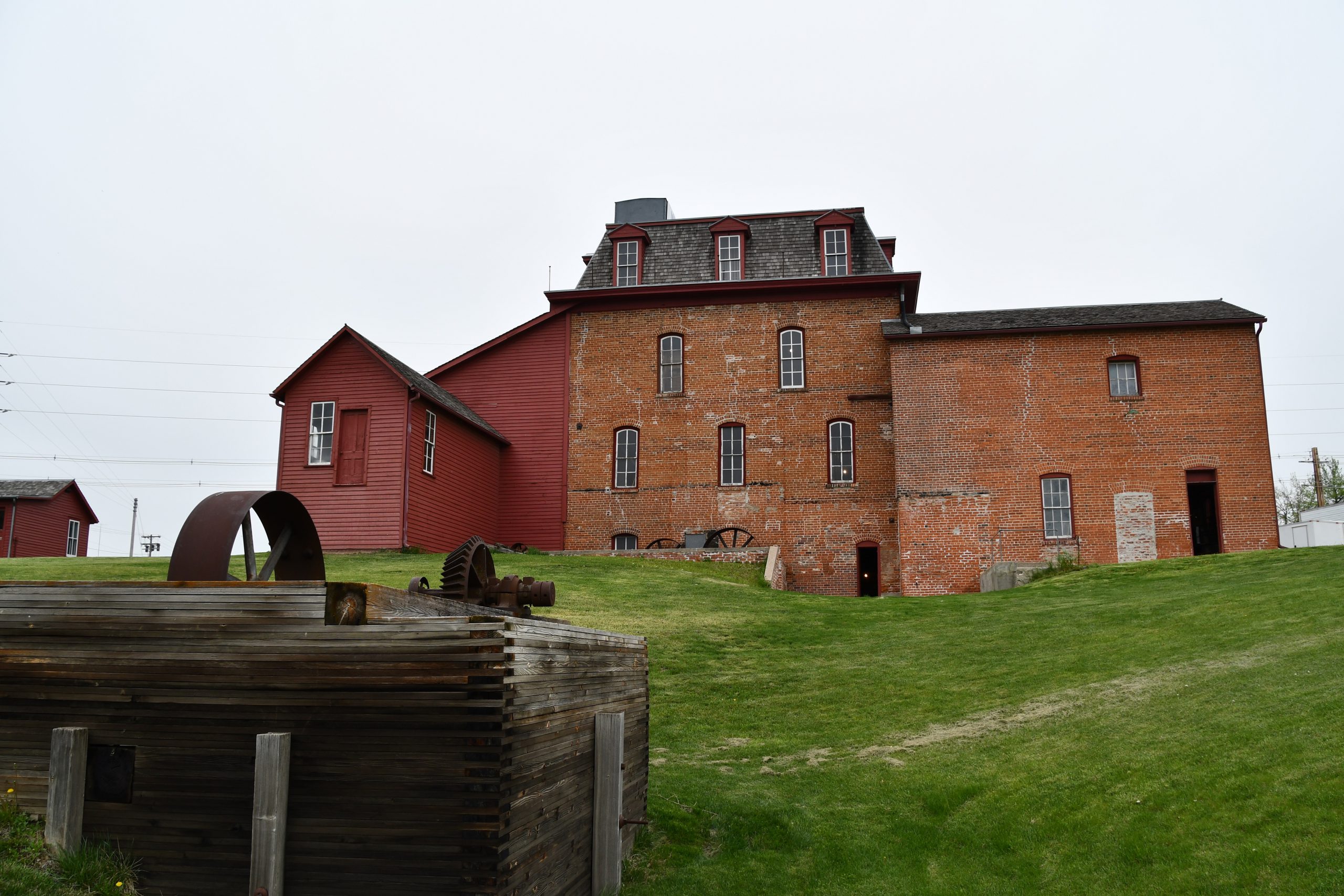
Become a Member!
Our members make history happen.


